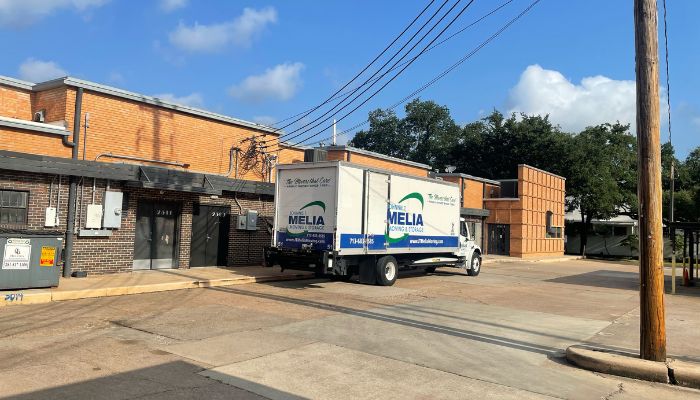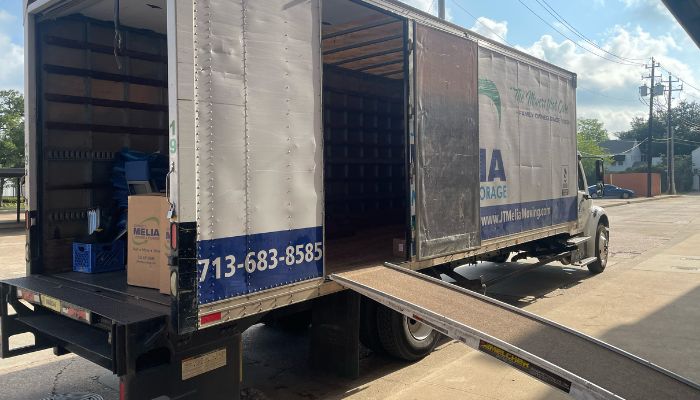Contents

Moving to a new office is an exciting chapter for any business, as it signifies growth or new opportunities. However, one challenge facing business leadership as they plan to relocate an office is minimizing operational downtime. Losing time to pack, load, transport, and assemble office essentials can have negative consequences on customers, employees, and business partners.
With a well-thought-out approach, you can keep operations running, reduce employee stress, and ensure your customers feel supported every step of the way. This complete guide will outline 10 expert tips for efficiently moving your office while minimizing downtime.
Arrange Moving Tasks Months in Advance
Planning well in advance is the cornerstone of a smooth office move. Ideally, start assigning tasks and setting timelines three to six months before moving day. Breaking down the process into manageable steps helps avoid last-minute surprises and ensures everyone is aligned on expectations.
Assign specific responsibilities, such as notifying vendors, updating business addresses, and transferring utilities, to designated team members. Early preparation also gives you time to troubleshoot unexpected challenges as the moving date approaches, ensuring minimal disruptions to your business operations.
Carefully Select a Moving Day
Selecting the right moving day can significantly improve the success of your office relocation. Choose a date during your business’s slowest season when workloads and client demands are typically lighter. For many businesses, slow seasons may include the end of the fiscal year, holiday breaks, or traditionally low-sales periods, depending on your industry.
External factors like weather, traffic conditions, and local events could also create avoidable delays, so be mindful of these. Notify employees, vendors, and clients of the move well in advance to give everyone ample time to adjust their plans. A carefully chosen moving day promotes a smoother transition for your team and business activities.

Relocate Your Office in Phases
Moving your office in phases is a practical tip to guarantee minimal downtime and disruption. Before the main move, begin by transferring nonessential items, such as archived files, surplus supplies, or unused equipment. This allows core operations to continue without interruption while the relocation process gradually unfolds.
By relocating in stages, your team can stay focused on their work, and you’ll have more control over logistics. This method also minimizes stress and chaos, making the entire process more manageable for everyone involved.
Create a Business IT Continuity Plan
Technology is vital to modern business operations, so creating a robust IT continuity plan is essential during a move. Start by conducting an inventory of all your tech assets, such as computers, servers, and networking equipment. Work with your IT team to outline steps for safely shutting down, transporting, and rebooting these systems.
Data backups are critical to prevent loss. Additionally, test your tech systems at the new office before going live to make sure operations can restart without avoidable troubleshooting. A solid IT continuity plan ensures seamless operations and avoids costly disruptions after the move.
Ensure Business Services Transfer Seamlessly
Transferring essential services (like Internet, phone, and utilities) ahead of time is crucial to avoid downtime. Coordinate with service providers weeks in advance to schedule installations at the new location. Testing these services before employees return to work is important to certify that everything is functioning smoothly.
Double-check that all business accounts and subscriptions have been updated to reflect the change of address. By prioritizing the transfer of vital business services, you can prevent interruptions and help your team remain productive from day one at the new office.
Protect Vital Company Resources
Relocating an office involves risks to valuable items, so protecting critical resources is a priority. Make sure you pad high-value equipment, such as computers and machinery, and get additional insurance coverage for peace of mind. Keep in mind that if you work with a moving company, it will supply this protection for you.
Additionally, back up important digital files and store them in multiple locations to prevent data loss during the move. Taking proactive steps to protect vital company resources will protect your assets throughout the moving process. And, as we mentioned, working with professional office movers who are experienced in handling furniture and specialized equipment further reduces risks.
Have Employees Work Remotely
Allowing employees to work remotely during the move can significantly reduce disruptions. Equip your team with the necessary tools, login credentials, and remote access well in advance.
Virtual collaboration platforms like chat apps and video conferencing tools keep everyone connected and productive until the new office is fully set up. This temporary remote arrangement minimizes the impact on day-to-day operations and provides movers the space and flexibility to complete the relocation efficiently.

Craft a New Office Layout
Designing a thoughtful office layout before the move can save time and improve efficiency as your equipment, furniture, and other supplies arrive at the new space. Be smart by incorporating collaborative areas, ergonomic workstations, and space for future expansion. Share the proposed design with your team to gather feedback and make adjustments that enhance functionality and flow.
A well-planned layout minimizes confusion during the transition and helps employees quickly settle into the new office. If you start with a clear vision, your office can become a productive and comfortable environment from day one.
Arrange Logistical Contingency Plans
Even if you meticulously plan everything, unexpected issues can arise during a move. Therefore, you should prepare a logistical contingency plan to address potential challenges, such as delayed deliveries, traffic, or service interruptions. Consider temporary solutions, like a short-term office space or alternative transportation for critical equipment.
Communicate these backup plans to your employees and partners so they know how to adapt in case of setbacks. By planning for the unexpected, you can contribute to your business operating smoothly despite any hiccups.
Work With a Skilled Office Moving Team
Partnering with experienced professionals can make all the difference in the speed, ease, and safety of your office move. Professional movers start by creating a detailed moving plan customized to your business needs. They then carefully pack your office equipment, furniture, and delicate electronics to protect them during the move.
Upon arrival at the new location, these experts assist with unpacking, setting up according to your vision, optimizing your office layout, and making it ready for operation. Office furniture movers, like us at JT Melia, can minimize your operational downtime, reduce the risk of asset damage, and get your office up and running in no time. If you’re relocating your office in the Houston area, contact JT Melia today for a free quote and a stress-free moving experience!
 Local and Long Distance
Local and Long Distance Office Relocations
Office Relocations International Movers
International Movers Houston Long Term Storage
Houston Long Term Storage